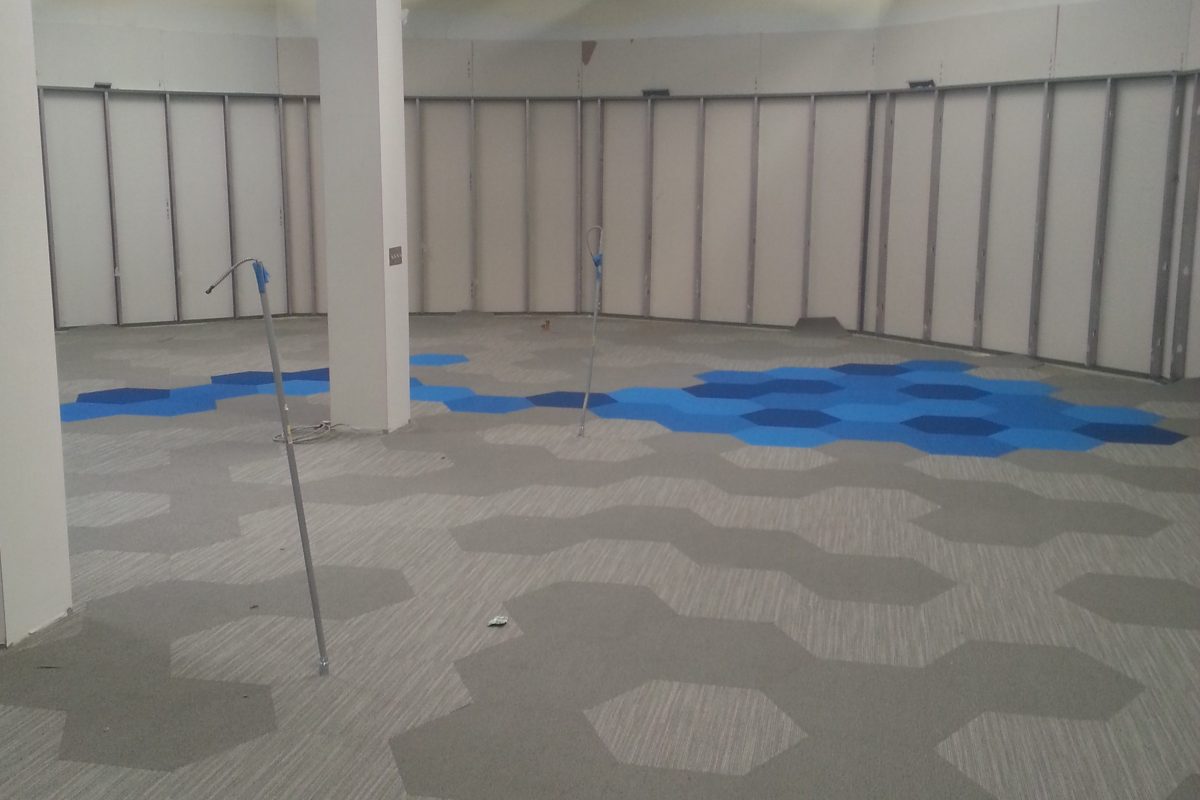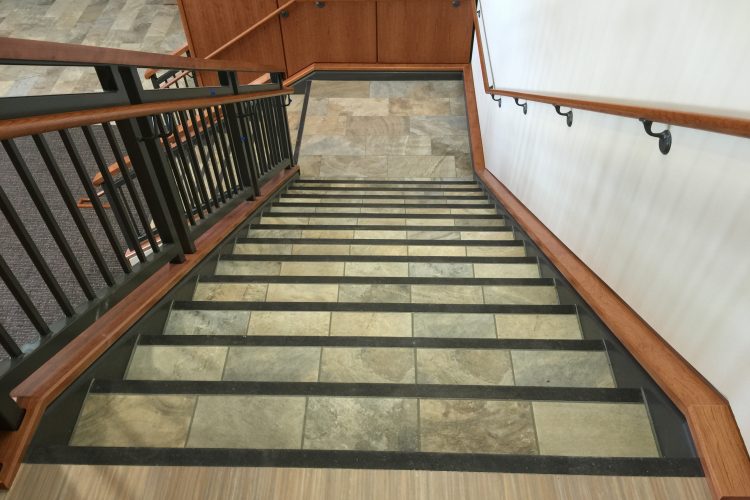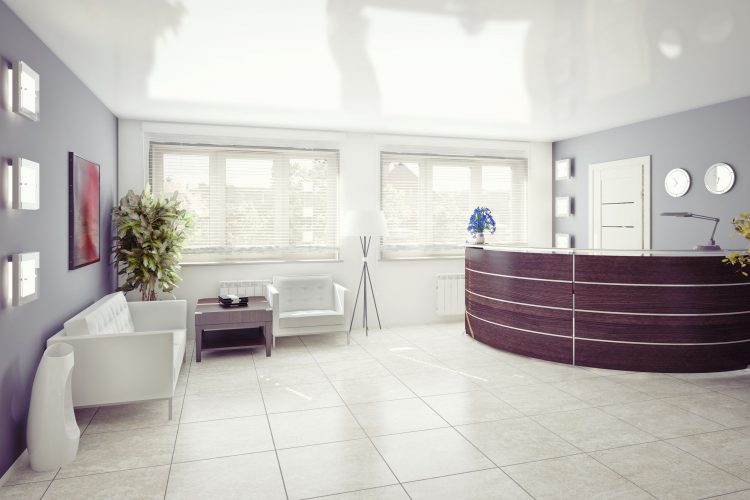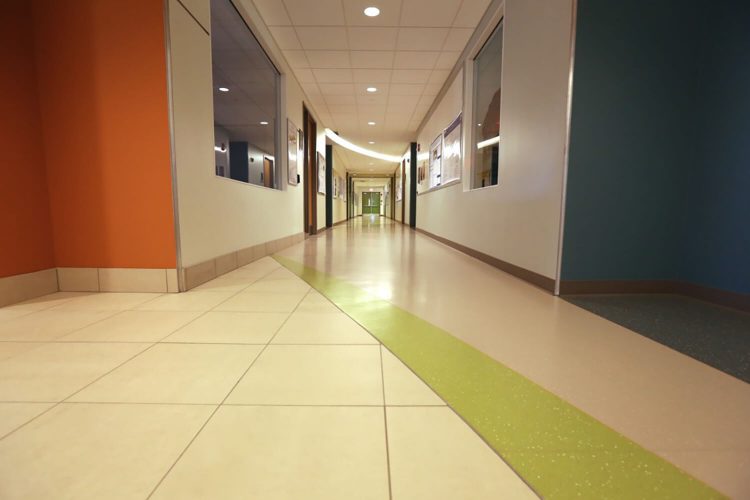How to Choose a New Commercial Carpet for Your Business

The carpet is a major component of an office building’s aesthetic. The employees should enjoy looking at it every day. Guests should feel welcomed in part from seeing a beautiful carpet.
Before you set out on a mission to buy new carpet, you need to familiarize yourself with a few points and features. The more informed you are, the more comfortable and confident you will be in the choice you make.
You may feel overwhelmed at the thought of selecting the “wrong” carpet. Selecting carpet doesn’t have to be a chore – with the right information, it can actually be enjoyable! First, you’ll need to determine what’s the general purpose of the carpet.
- What kind of company do you have? Medical? Industrial? Food industry? Retail?
- How much traffic do your floors see in a given day?
- What’s the aura like? Professional? Casual? Nondescript?
- Will harsh chemicals, liquids, or food be around your new flooring?
You may be tempted to select one of the cheaper options for commercial carpet, but keep in mind cheaper carpets will likely wear faster than higher quality carpets. Replacing carpets has initial fees, but can also disturb workflow and decrease productivity for the business (depending on your installation options). Read more on Different Flooring For Different Businesses.
When you are perusing different types of commercial carpets for your business, make sure to ask yourself these six questions to guide you through your desicion process.
Is the Commercial Carpeting Durable Enough?
A lot of people will walk over your office carpet. You do not want to have to replace a new carpet after only a year or two. Therefore, it makes sense to get something resilient.
Generally, an office space will receive a lot more foot traffic than a residence. Because of this, it’s important to pick carpeting that is durable enough to stand the test of time. These three factors can significantly impact the durability of commercial carpet:
- • Color
- • Pattern
- • Density
First, the color you choose should reflect the amount of traffic you expect the carpet will face. For example, white carpet will likely not stay clean in a highly trafficked area. A darker color is probably a better option.
Second, if your goal is to hide dirt and traffic routes on the carpet, a pattern is ideal. This allows you to go longer between carpet cleanings and replacements.
Finally, consider the traffic rating of the area when choosing carpet density. A high-traffic area should have denser carpeting that is more durable.
Is the Carpet Type Appropriate For Your Space?
It’s time to decide on the type of commercial carpeting is suitable for your office, if at all. For example, high-traffic areas are usually better suited for carpet tiles that can be replaced as needed while areas where chairs need to roll easily, such as in a reception area, would do best with low-pile carpet options.
You also need to ask yourself if a certain carpet is suitable for what a room will be used for. For example, an even more durable carpet may be needed if the carpet could be exposed to chemicals, such as chlorine. You also want to be sure the carpet passes the NBS Smoke Chamber Test so that you are prepared in the event of a fire.
If your place of business frequently deals with wet floors or potentially flammable conditions, carpet may not be the right choice for the space. Instead, linoleum or laminate flooring might be the better choice. You can even consider doing a combination of flooring types that define the different areas in your building.
How Does the Construction of Commercial Carpet Affect Its Performance?
How your carpet is constructed contributes to its performance. When you select your carpet, make sure you take its construction into consideration.
Face Weight/Pile Weight
Face weight, also known as pile weight, refers to how much yarn was used to make the carpet. It’s usually measured in ounce per square foot. Typically, commercial carpet has a face weight of 16-40 ounces of yarn per square foot of carpet.
Density
The density of carpet is determined by how the yarn is woven. This is different than face weight. Some carpets have a tight weave with short threads, while others have long threads that are loosely pulled together. The density of a carpet determines how well the carpet will uphold to traffic and general wear and tear.
Backing
Carpets come with a variety of backing options that contribute to its longevity. Most carpets have a plastic backing that holds the yarn together. Some have an additional backing, called action bac, to increase security and pull resistance. Commercial carpets often have the regular plastic backing and a coating made out of latex instead of the secondary backing. You can select carpet that contains a moisture barrier if your specific location sees any type of moisture or liquid.
Padding
The underlayment of carpet is a critical component to the construction of commercial carpet. Many office carpets are glued directly to the floor, but sometimes padding makes more sense, depending on your specific needs. Padding reduces echo and adds extra insulation, perfect for colder regions like Rochester, NY. It’s also a good idea for stairs and conference rooms, where climbing/standing is required.
How Will the Carpet Affect the Business’s Aesthetics?
Fifty years ago, business owners were limited in their selection for commercial carpets. Now, you have virtually limitless options. You now have the privilege to select your:
- • Color
- • Texture
- • Design
- • Pattern
- • Heathering
Color
The first step in determining the best color is figuring out whether you want something light or dark based on the amount of traffic coming through the building. Next, you have to figure out what specific color is ideal. You should consider the vibe you want your office building to give off. Law offices may need something plain and professional. Business owners who want to show off their company’s fun side may choose to go with something bright and bold.
Style
Patterning is also important. Again, you do not want an overly distracting carpet. Pick something appropriate for the vibe you want your organization to have.
Carpet Seams
The seams are important to consider because they can ruin the aesthetic quality of your space. Unless you are carpeting a small space, seams can often be unavoidable. Most carpet comes in lengths of 12 to 15 feet. If your space exceeds that length, you may wind up seeing some seams between your carpeting. One solution could be the strategic way in which you arrange furniture. Or you can ask Surface Design Solutions how they can help you minimize the sight of seams.
Pile Shading
You might also want to know about pile shading. Pile shading refers to the effects of the shadows and natural layout of a carpet. When you vacuum, the lines you see are a result of the carpet’s pile shading. This is natural – but if it bothers you, you can draw shades or curtains to cut back on any noticeable pile shading.
Does the Price Fit Your Budget?
Cost is a huge factor. Chances are, you have a certain amount of money set aside for the new flooring in your office or the flooring going into your new office. This is a good idea because it ensures that you don’t spend more on this project than you should.
You should create a budget for how much you intend to spend on a new commercial carpet before meeting with professionals.
As you decide between different types and qualities of commercial carpet, be sure to keep your budget in mind. If you have plenty of funds to allocate, you may want to choose a patterned, designer carpet. However, if you need to keep costs low, go for a solid color without all of the bells and whistles.
What Will Maintenance Be Like?
In addition to the initial cost, you also want to look at how much it will cost to maintain the carpet. Some types of carpets just need to be vacuumed once in a while. Others require a professional commercial cleaning service. You want your new carpet looking great for many more years.
How to Choose Carpet
When you have contractors asking you questions about functionality, it can be difficult to invest time into thought about the aesthetics of your facility.
But aesthetics are important. Aesthetics affect employees, clients, and the general mood of the workplace. That’s why we like to provide tools to building owners that help them choose carpet that complements their office personality.
Here is a useful design tool created by one of the commercial carpet brands we install. Tools like this make it quicker and easier to find the carpet that fits your personality.
Online Tool for Choosing Carpet: Mohawk Group – DesignFLEX Visualizer
One of our trusted carpet brands, Mohawk Group, offers an interactive tool for choosing carpet: DesignFLEX Visualizer.
The tool gives you 4 different visualizer options to explore design possibilities (e.g., Standard, Blending, Progressions, Custom). For beginners, we recommend starting with the Blending option. That one starts you off with a digital 3D rendering of a ready-made room.
Once you get the hang of it, start exploring the other visualizer options. Then you can explore the 10+ standard installation options that determine the pattern or arrangement of your carpet (e.g., basketweave, large tile, monolithic).
You can also select well over 200 carpet styles and colors, and see what they look like installed in 30+ different digital sample rooms (e.g., corporate offices, education facilities, retail spaces). Give it a try!
Get Help from the Commercial Carpeting Professionals
If you need help determining what kind of commercial carpet best suits your needs, contact us and we’d be happy to take you through our showroom and demonstrate our most popular options!
Related Posts

Durable Commercial Flooring: Everything You Need to Know About Different Types

Commercial Porcelain Tile: Why It’s a Great Option Compared to Ceramic Tile

